Ceramic vessels, sometimes fashioned in whimsical animal forms, were used thousands of years ago as baby bottles to feed infants animal milk, according to scientists, offering an intriguing look at how and what infants were fed in prehistoric times.
Archaeologists said on Sept. 25 they confirmed the function of these ceramic objects by finding chemical traces of milk belonging to animals such as cows, sheep and goats in three such items found buried in child graves in Germany.
The oldest of the three vessels described in the study was made between 2,800 and 3,200 years ago during the Bronze Age. Other similar objects dating back as far as about 7,000 years ago during Neolithic times have been found in various other locations, the researchers said.
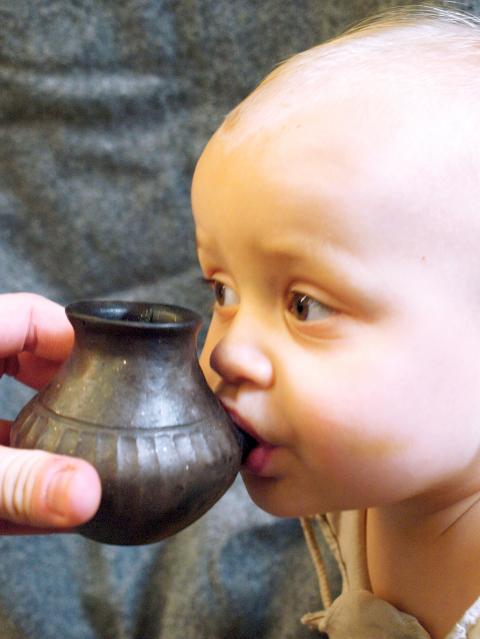
Photo: REUTERS
照片:路透
“I think this has provided us the first direct evidence of what foods babies were eating or being weaned on in prehistory,” said biomolecular archaeologist Julie Dunne of the University of Bristol in the UK and lead author of the study, published in the journal Nature. “I think this shows us the love and care these prehistoric people had for their babies.”
These objects, little enough to fit into a baby’s hands, served as vessels for milk, with a narrow spout for the baby to suckle liquid. While the three objects examined for the study were somewhat plain, others boasted lively shapes including animal heads with long ears or horns and human-looking feet.
“I find them incredibly cute. And prehistoric people may have thought so, too — they would certainly have a dual function of entertaining the children just like modern stuffed animals,” said archaeologist Katharina Rebay-Salisbury of the Austrian Academy of Sciences’ Institute for Oriental and European Archaeology, and a co-author of the study. “They testify to the creativity and playfulness we often forget to attribute to our ancestors,” Rebay-Salisbury added.
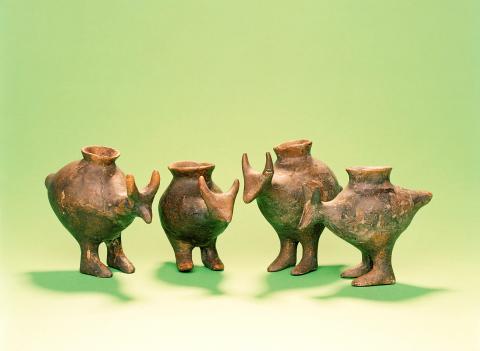
Photo: REUTERS
照片:路透
Life at the time was not easy, Rebay-Salisbury added, with many people living in unhygienic conditions, experiencing famine and disease and facing low life expectancy. During the Bronze Age and subsequent Iron Age in Europe, perhaps about a third of all newborns died before their first birthday and only about half of children reached adulthood, Rebay-Salisbury said.
These feeding vessels may have made life easier for mothers, as animal milk could substitute for breastfeeding, the researchers said. “Duties of mothering — amongst which feeding is an important one — can also be undertaken by other members of the community when children are fed with feeding vessels,” Rebay-Salisbury said.
(Reuters)
科學家指出,數千年前的人類有時會把陶製容器塑造成異想天開的動物形狀,將它們作為奶瓶使用,餵嬰兒喝動物的乳汁。這項發現提供一個有趣的觀點,讓人一窺史前時代人類如何、又是用什麼來餵食嬰兒。
考古學家在九月二十五日表示,他們在埋入德國兒童墳墓裡面的三個同類型物件中,發現殘留動物乳汁的化學痕跡──包括母牛、綿羊、山羊等──因此確認了這些陶製物品的用途。
在研究描述的三個容器中,年代最早的製造於兩千八百年前到三千兩百年前的青銅器時代。研究人員指出,其他許多地點都曾經發現類似的物件,最遠可追溯到大約七千年前的新石器時期。
該篇研究發表於期刊《自然》,主要作者為英國布里斯托大學的生物分子考古學家茱莉‧鄧恩,她表示:「我認為這項發現提供第一手直接證據,顯示史前時代的小寶寶吃什麼食物,或是用什麼食物斷奶。」她也指出:「我想,這項發現也向我們展現這些史前時代人類對小嬰兒的愛與關懷。」
這些物件小到能夠放進嬰兒的小手中,是用來盛裝奶水的容器,瓶身上附有一個狹長的壺嘴,讓小寶寶能夠從中吸吮液體。雖然研究檢驗用的三個物件外觀稍嫌平淡無奇,但其他同類陶器形狀卻相當生動,有著動物的頭,附著長長的耳朵或是犄角,以及像人類的腳。
研究的共同作者、奧地利科學院東方與歐洲考古研究所的考古學家凱瑟琳娜‧雷貝─索爾斯伯里表示:「我覺得這些陶器難以置信地可愛。而且搞不好史前的人們也是這樣覺得──這些陶器很可能還具備另一項娛樂小孩的雙重功能,就像是現代的填充玩具。」她補充說:「這些陶器證實老祖先們具備的創意和愛開玩笑的個性,那都是我們經常忘記的。」
雷貝─索爾斯伯里還指出,當時的生活並不容易,原因在於許多人都居住在不衛生的環境中、遭受饑荒與疾病,還要面臨很短的預期壽命。她表示,在青銅器時代以及接下來的鐵器時代,歐洲地區可能有大約三分之一的新生兒在一歲之前死亡,而且大概只有一半的小孩能夠順利長大成人。
研究人員表示,這些餵食用的容器會讓母親們的生活輕鬆一些,因為動物的乳汁可以代替親餵母乳。雷貝─索爾斯伯里指出:「當小孩可以用器具餵食的時候,為人母的諸多責任──其中,最重要的一項是餵食嬰兒──也就可以由部落的其他成員接手幫忙。」
(台北時報章厚明譯)
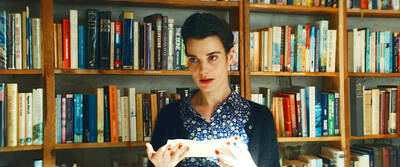
A: In addition to “Mission: Impossible 8,” what other new movies are in theaters? B: “Final Destination: Bloodlines” and “The Wedding Banquet” are out. The French film “Jane Austen Wrecked My Life” will also open soon. A: The Final Destination horror movie series is so scary that I don’t dare watch it. B: Then how about “The Wedding Banquet,” which is a 2025 remake of the 1993 classic of the same title? Oscar-winning actress Youn Yuh-jung’s performance in it is highly anticipated. A: But as a fan of British writer Jane Austen, I’m more interested to see how her works
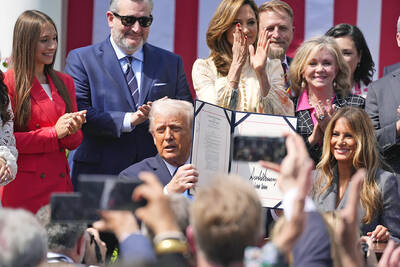
US President Donald Trump on Monday last week signed the TAKE IT DOWN ACT (Tools to Address Known Exploitation by Immobilizing Technological Deepfakes on Websites and Networks Act), bipartisan legislation that enacts stricter penalties for the distribution of non-consensual intimate imagery, sometimes called “revenge porn,” as well as deepfakes created by artificial intelligence. The measure, which goes into effect immediately, was introduced by Sen. Ted Cruz, a Republican from Texas, and Sen. Amy Klobuchar, a Democrat from Minnesota, and later gained the support of First Lady Melania Trump. Critics of the measure, which addresses both real and artificial intelligence-generated imagery, say
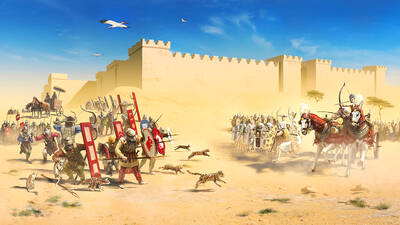
Cats ruled in ancient Egypt—and not just in their own minds. These clever, graceful creatures were so deeply respected by the Egyptians that harming one could lead to severe punishment, even death. But why did the Egyptians hold cats in such high regard? It wasn’t just because they were cute; cats played a crucial role in protecting the country’s grain stores from pests. As guardians of Egypt’s food supply, they were seen as sacred animals. The Egyptians honored them through Bastet, the cat-headed goddess of protection, the home and fertility. Egyptians didn’t just love cats; they worshipped them. Cats lived in luxury,
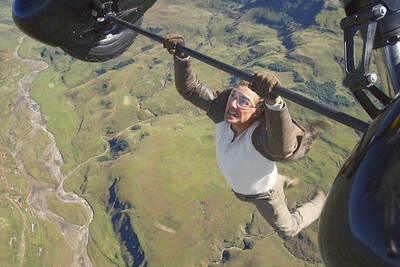
A: Wanna go see a movie during the three-day weekend for the Dragon Boat Festival? B: Sure, I wanna see “Mission: Impossible – The Final Reckoning.” A: Rumor has it that this may be actor Tom Cruise’s last mission with the Mission: Impossible action movie franchise. B: Tom was only 34 when the first installment of the series was released in 1996. Now, he’s 63 and the eighth installment is out. A: I hope he’ll stay with the series. Let’s go see him fight against AI this weekend. A: 端午節三天連假週末要不要去看電影? B: 好啊我想看 《不可能的任務:最終清算》! A: 這有可能是湯姆克魯斯最後一次為動作片《不可能》系列出任務。 B: